Common Designs from the BEAC, 1973-1984
The Banque des États de l'Afrique Centrale (BEAC) was created in 1972 to provide monetary policy, including a common banknote series, for the countries of the Union Douanière et Économique de l’Afrique Centrale (UDEAC) which includes the Central African States of Cameroon, Central African Republic, Chad, Congo and Gabon.
The first banknotes to come out of the BEAC were the 1974 issues, a set of four notes (500F, 1000F, 5000F and 10,000F) for each country in the UDEAC. Raymond Vaudiau provided the artwork for the notes, with a unique face design for each country showing typical native people and scenes of each country. The back of each denomination carries a common design.
The higher denominations of these notes are quite rare, and unfortunately I don't have them all to display here.
500F Education
The banknote faces were engraved by different artist for each country: Congo: J. Hérouard; Gabon & Central African Republic: H. Renaud; Chad: Poilliot; Cameroon: J. Jubert. The common back was engraved by J. Hérouard.
The initial issue from 1974-78 was printed by Banque de France with an intaglio pass over color lithography. Later issues from 1980 onwards were printed by François-Charles Oberthür, purely with lithographic press.
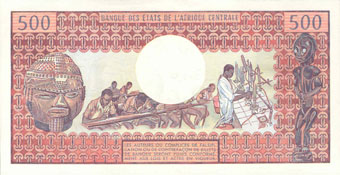
Students and chemical testing

Young woman from Chad and view of Lake Chad and birds
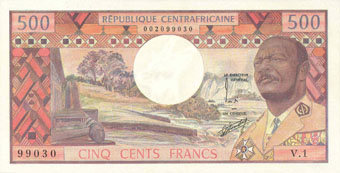
Jean-Bédel Bokassa and view of hydro-electric dam at Boali
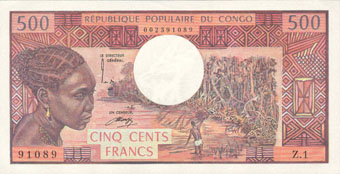
Congo woman and Mangrove trees in the North of the Congo
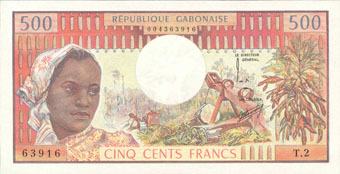
Gabonese woman and logging scene
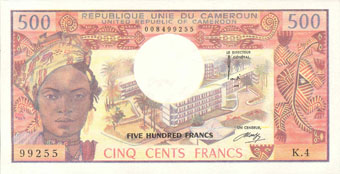
Peulh woman and University of Yaoundé
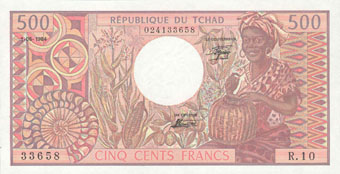
Woman weaving wicker basket, farm crops
1000F Transportation
The banknote faces were engraved by different artist for each country: Congo: Poilliot; Gabon, Central African Republic and Chad: H. Renaud; Cameroon: J. Jubert. The common back was engraved by J. Hérouard.
The initial issue from 1974-78 was printed by Banque de France with an intaglio pass over color lithography. Later issues from 1980 onwards were printed by François-Charles Oberthür, purely with lithographic press.
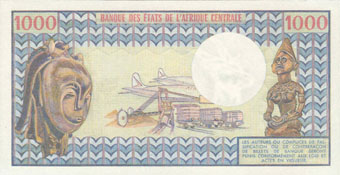
Planes, trains and bridge
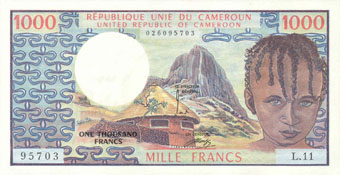
Young Peulh shepherd and tourist camp at Bou Karou
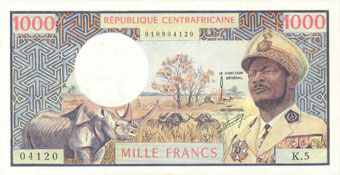
Bokassa, water buffalos on the savanna, and rhinoceros
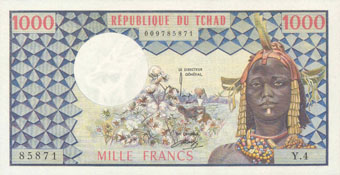
Native woman from Chad and cotton field
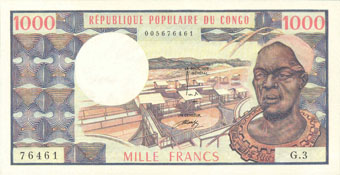
King Makoko 1st and oil refinery at Pointe Noire
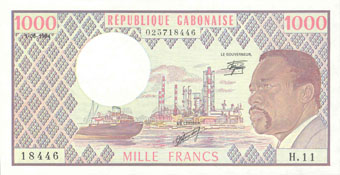
President O. Bongo, ship and Sogara oil refinery at Port Gentil
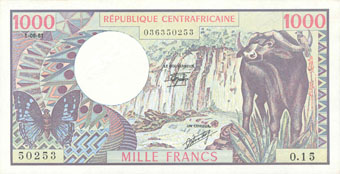
Butterfly, waterfall and water buffalo
5000F Industry and Energy
The banknote faces were engraved by different artist for each country: Congo: Jubert; Gabon: Unknown; Central African Republic: Combet; Chad: Unknown; Cameroon: Armanelli (F), Marciat (B), Piel (Intaglio).
The 5000 and 10,000f issues were all printed by Banque de France with an intaglio pass over color lithography.
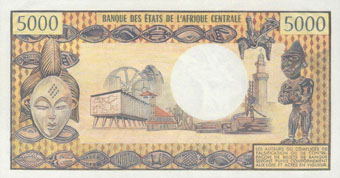
Industry and energy
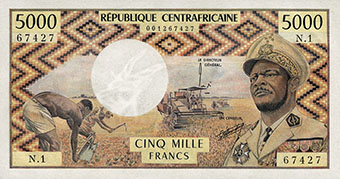
President Bokassa, field workers and combine
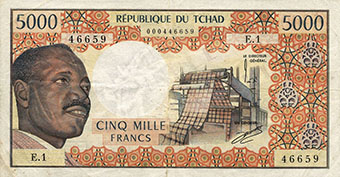
President Tombalbaye and fabric printing factory at Sarh, Chad
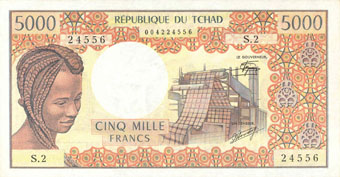
Young woman and fabric printing factory at Sarh, Chad

Amadou Ahidjo and railroad laying machine
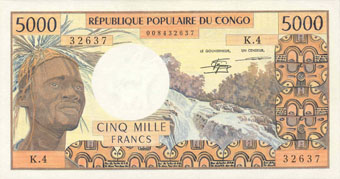
Native Bateke healer and chutes at Djoue hydro-electric power station
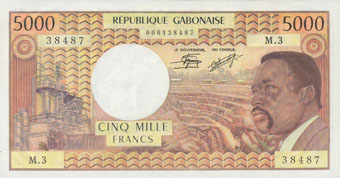
President O. Bongo, oil refinery and pit mining
10,000F Farming
The banknote faces were engraved by different artist for each country: Congo: Unknown; Gabon: Combet; Central African Republic: J. Hérouard (F), Combet (B); Chad: Durrens; Cameroon: Betemps.
The 5000 and 10,000f issues were all printed by Banque de France with an intaglio pass over color lithography.
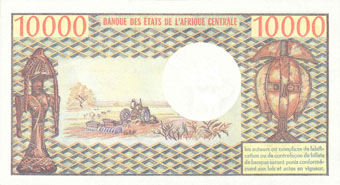
Tractor plowing
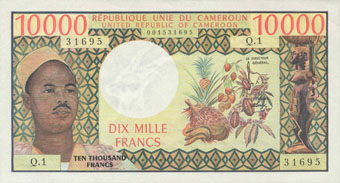
Amadou Ahidjo and tropical fruits
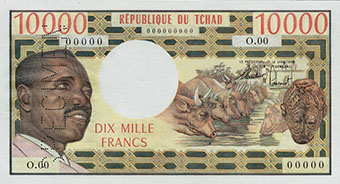
President Tombalbaye, Water Buffalo
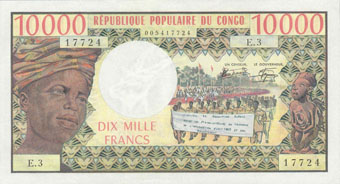
Young Congolese Woman and Parade

President O. Bongo and Manganese mine
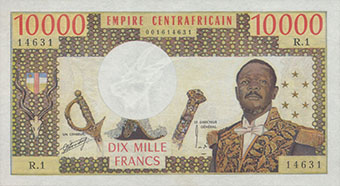
Emperor Bokassa I, Sword Hilts